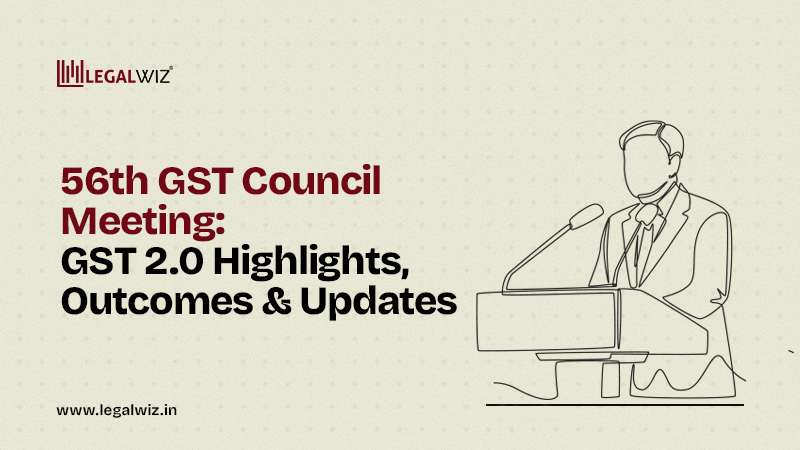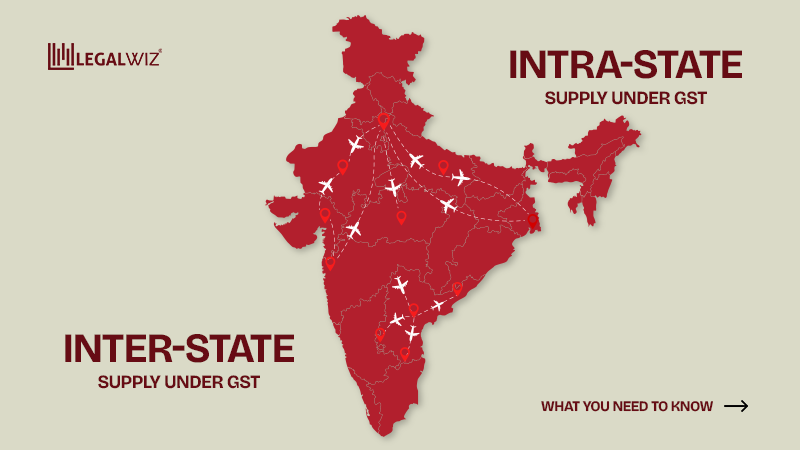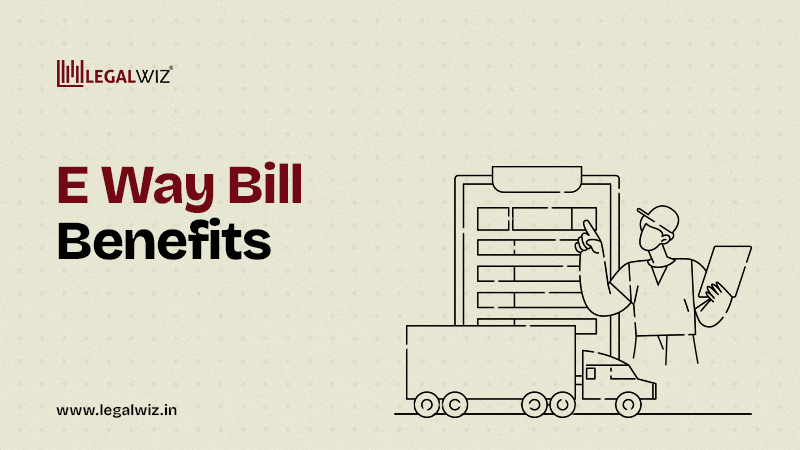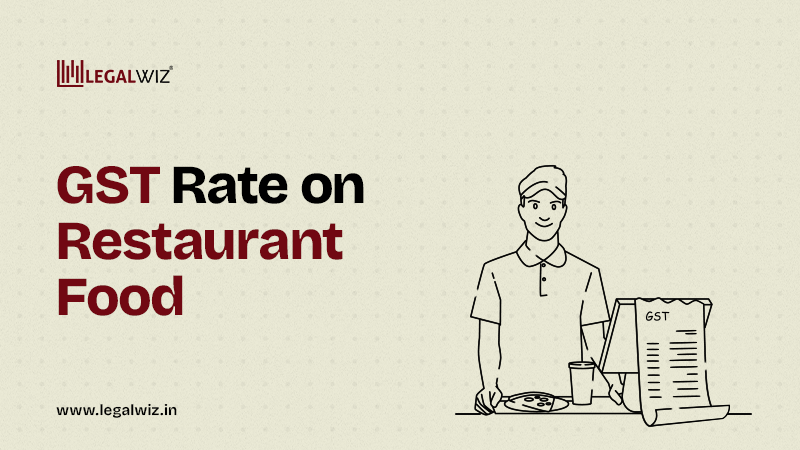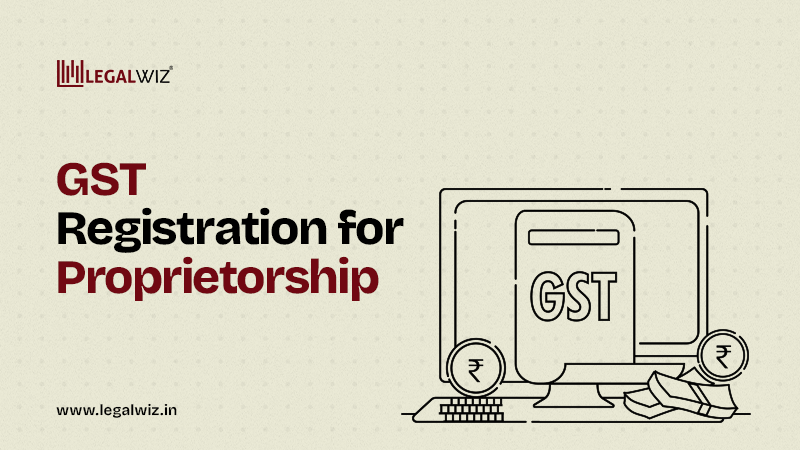56th GST Council Meeting: GST 2.0 Highlights, Outcomes & Updates
The 56th GST Council meeting took place on 3rd September 2025 in New Delhi. After a six-month break, the Council returned with some of the biggest updates we’ve seen in years.
Why such a buzz around this meeting? Because it followed the Prime Minister’s Independence Day promise of “Next-Generation GST Reforms.” And true to that promise, the Council has approved changes that will affect everything from your grocery bill to your insurance premium—right down to how businesses handle GST registration and compliance.
The big news: GST slabs are now simpler. The old 12% and 28% categories are gone. In their place, most goods and services will fall under 5% or 18%, with a steep 40% slab for sin and luxury items. Add to that—life and health insurance are now GST-free, and refunds are set to get faster and easier.
For the full list of all the new GST rates, head over to pib.gov.in — but stick around, because we’re breaking down the bits that actually matter to real people (a.k.a. us!).
GST just got a glow-up! From slashing prices on your daily must-haves to tightening the tax screws on those bougie buys, here’s your cheat sheet to all the buzz from the 56th GST Council meeting.
1. Why the GST Council Meeting Matter?
Why was the 56th GST Council meeting such a showstopper? Let’s hit rewind.
On 15th August 2025, during his Independence Day address, Prime Minister Narendra Modi dropped a headline-grabber: India is ready for Next-Generation GST Reforms.
That one-liner sent ripples through the country — businesses perked up, tax pros started decoding possible implications, and everyday taxpayers began wondering what this “next-gen” GST would look like in real life.
Fast forward to now, and it’s clear: the reform train has officially left the station. Which makes this the perfect moment to understand if your business is eligible or not for GST.
Knowing whether you need to register for GST isn’t just about ticking a legal box — it’s the gateway to staying compliant and unlocking perks like input tax credit. So don’t just wait and watch — check your eligibility and get ahead of the curve!
This meeting was long overdue. The Council hadn’t met for six months, and several important issues were piling up:
- Rate rationalisation—the need to simplify GST’s multiple slabs into something cleaner.
- Inverted duty structures—industries like textiles, fertilizers, and paper were paying higher taxes on inputs than finished products.
- Ease of compliance—calls for faster refunds, smoother registrations, and less paperwork.
The larger vision was clear: make GST simpler, fairer, and future-ready. The Council meeting was the chance to turn that vision into reality, and it didn’t disappoint.
And to make that process smoother, let’s talk about the flipside—common mistakes in GST filings for SMEs. These slip-ups may look small on paper but can cost a business dearly in penalties, blocked input credits, or delayed refunds. Better to catch them early than pay for them later.
2. Key Highlights from the 56th GST Council Meeting
If you missed the marathon press briefings, here’s the 56th GST Council meeting in one glance. Think of it as your GST cheat sheet:
- Two-tier GST structure: Goodbye to the old 12% and 28% slabs. Now it’s just 5% for essentials and 18% for most other goods and services.
- 40% demerit slab: A brand-new category for sin and luxury goods—covering tobacco, luxury cars, casinos, aerated drinks, and more.
- Insurance gets relief: Life and health insurance premiums are now GST-free, making policies easier on the pocket.
- GSTAT rollout: The Goods and Services Tax Appellate Tribunal (GSTAT) will finally go live in 2025, with strict deadlines for appeals and hearings.
- Refund simplifications: Exporters and businesses under the inverted duty structure will get faster, system-based refunds, with 90% released provisionally from November 2025.
- CGST clarity: Sections 15 & 34 updated to ensure smoother handling of discounts, credit notes, and input tax credit reversal.
- New rule for intermediary services: Place of supply will now be where the recipient is located, helping Indian exporters claim benefits.
- Simplified e-commerce registration: Small sellers using platforms like Amazon or Flipkart will get an easier registration process.
In short, the Council tried to strike a balance—relief for the common man, clarity for businesses, and tighter rules for luxury indulgences.
Need a quick refresher on how SGST, CGST, and IGST work? You can check out our simple explainer to understand the different types of GST.
3. GST Rate Changes – The Big Story
If GST were a movie, this section would be the plot twist. Prices are shifting, some in your favour, and some that might pinch your wallet. Here’s the breakdown:
3.1 Rate Cuts – Relief for the Everyday Taxpayer
| Category | Items (Examples) | Old Rate | New Rate |
| Daily Essentials | Hair oil, shampoo, toothpaste, soaps, dairy (butter, ghee, cheese), namkeens, utensils | 12–18% | 5% |
| Farmers & Agri | Tractor tyres, small tractors, pesticides, drip irrigation systems, agri machines | 12–18% | 5% |
| Healthcare | Life & health insurance, medicines, oxygen, diagnostic kits, glucometers, spectacles | 12–18% | Exempt / 5% |
| Automobiles | Petrol/diesel cars (small), three-wheelers, motorcycles ≤ 350cc | 28% | 18% |
| Education | Maps, notebooks, pencils, erasers, crayons, and pastels | 5–12% | Nil |
| Appliances | TVs, ACs, dishwashers, projectors, monitors | 28% | 18% |
Bottom line: Essentials, students, farmers, and patients got a tax breather.
3.2 Rate Hikes – Luxury Comes at a Price
| Category | Items (Examples) | Old Rate | New Rate |
| Mining | Coal, lignite, peat | 5% | 18% |
| Sin Goods | Tobacco, pan masala, aerated/caffeinated drinks, carbonated beverages | 28% | 40% |
| Luxury Autos | Big cars, large motorcycles (>350cc), yachts, private aircraft | 28% | 40% |
| Leisure & Gaming | Casinos, online gaming, horse racing, betting, IPL tickets, and gambling licenses | 28% (+ ITC) | 40% (+ ITC) |
| Paper & Textiles | High-end apparel (>₹2,500), quilts, dissolving wood pulp, and premium papers | 12% | 18% |
Bottom line: Luxuries and indulgences just became a whole lot pricier.
3.3 Effective Date for the New GST Changes
All changes apply from 22nd September 2025, except tobacco and allied products, which will kick in later once compensation cess loans are cleared.
4. Compliance Gets a Makeover: GST 2.0 Updates You Can’t Miss
The GST Council didn’t just play around with tax rates—it also worked on making the system a little less of a paperwork nightmare. Here are the key compliance updates:
- GSTAT gets rolling: The long-awaited Goods and Services Tax Appellate Tribunal (GSTAT) is finally set to go live in 2025. Its Principal Bench will also act as the National Appellate Authority for Advance Rulings, making dispute resolution faster. Deadlines are strict—appeals accepted till 30th September 2025, hearings by 31st December 2025, and backlog appeals cleared by 30th June 2026.
- Refunds made smoother: From 1st November 2025, the CBIC will introduce a revised system for 90% provisional refunds on inverted duty and zero-rated supplies. Exporters get more relief too, with no minimum threshold for refunds on exports made via post or courier.
- Easy entry for small sellers: Small suppliers selling through e-commerce platforms (like Amazon, Flipkart, etc.) will get a simplified GST registration scheme, cutting down on compliance hurdles.
- Returns stay the same: For those hoping for fewer filings—sorry. The Council has confirmed that the monthly GST return filing system remains unchanged. If you’d like a clearer picture of what each return means, here’s a simple guide on the 16 types of GST returns your business should know.
In short: expect fewer headaches with refunds and registrations, but don’t toss your return calendar just yet.
5. Industry-Wise Impact of GST 2.0: Who Gains, Who Pays
The 56th GST Council meeting didn’t just reshuffle tax slabs—it rewrote how different industries will feel GST in their daily operations. From kitchen shelves to car showrooms, here’s the breakdown of winners and losers.
5.1 Common Man’s Basket – Cheaper Groceries, Lighter Bills
The Council gave the biggest Diwali gift to households. From bread to butter, most daily-use items are now either tax-free or at 5%, cutting down grocery bills in a very real way.
| Items | Old GST | New GST |
| UHT milk, paneer, curd, lassi, buttermilk | 5% | Nil |
| Khakhra, roti, chapati | 5% | Nil |
| Paratha, parotta, Indian breads | 18% | Nil |
| Butter, ghee, dairy spreads | 12% | 5% |
| Cheese, khoya, condensed milk | 12% | 5% |
| Packaged drinking water (incl. 20L bottles) | 12% | 5% |
| Ice cream, edible ice | 18% | 5% |
| Chocolates, candies, toffees | 18% | 12% |
Impact: Middle-class households see genuine savings on food and daily needs. Even street vendors selling rotis and parathas now get GST-free relief.
5.2 Healthcare & Insurance – Wellness Without the Tax Burden
Healthcare got perhaps the boldest reform. Life and health insurance is now GST-free, making policies cheaper and encouraging wider adoption. On top of that, critical drugs, equipment, and diagnostic kits have dropped to 5% or Nil.
| Items | Old GST | New GST |
| Life & health insurance premiums | 18% | Nil |
| Medical-grade oxygen | 12% | 5% |
| Diagnostic kits & reagents | 12% | 5% |
| Glucometers & strips | 12% | 5% |
| Corrective spectacles | 12% | 5% |
| Surgical rubber gloves | 12% | 5% |
| Thermometers (all medical types) | 18% | 5% |
Impact: Insurance becomes affordable, hospitals lower patient costs, and diagnostics see wider access. It’s a structural nudge toward universal health coverage.
5.3 Education Supplies – Freeing Learning from Tax
The Council doubled down on education by exempting most school supplies. Students and parents benefit directly, while schools and book publishers face less compliance burden.
| Items | Old GST | New GST |
| Erasers, maps, globes | 5–12% | Nil |
| Pencils, crayons, drawing chalks | 12% | Nil |
| Exercise books, graph books | 12% | Nil |
| Mathematical, geometry & color boxes | 12% | 5% |
| School stationery sets | 12% | 5% |
Impact: Zero GST on essentials makes education cheaper for millions. For rural schools and low-income families, this is a small but powerful change.
5.4 Automobiles – Mobility Gets Mixed Signals
For the automobile sector, it’s a tale of two markets. Mass mobility gets cheaper with cuts on small cars, two-wheelers, and public transport. Luxury mobility, however, now comes at a punishing 40%.
| Items | Old GST | New GST |
| Tyres (common vehicles) | 28% | 18% |
| Small cars (≤1200cc petrol / ≤1500cc diesel) | 28% | 18% |
| Three-wheelers & ambulances | 28% | 18% |
| Motorcycles & mopeds ≤350cc | 28% | 18% |
| Luxury cars & SUVs | 28% | 40% |
| High-end bikes (>350cc), yachts, aircraft | 28% | 40% |
Impact: Common man mobility gets a boost, rural and urban transport costs drop, but luxury demand could cool under the new sin-like tax treatment.
5.5 Agriculture – Farmers Finally Catch a Break
For years, farmers faced an inverted duty structure. This time, GST cuts have made tractors, irrigation equipment, and even beekeeping gear cheaper.
| Items | Old GST | New GST |
| Diesel engines ≤15HP | 12% | 5% |
| Irrigation nozzles, sprinklers | 12% | 5% |
| Harvesting & threshing machines | 12% | 5% |
| Poultry & beekeeping equipment | 12% | 5% |
| Tractors (≤1800cc) | 12% | 5% |
| Agricultural trailers | 12% | 5% |
Impact: Lower input costs directly benefit small and medium farmers. Food inflation may also ease in the medium term.
5.6 Gadgets & Lifestyle – Middle-Class Relief, Affordable Leisure
Consumer electronics and sports goods are now within easier reach. This is a direct boost to the middle class, who often felt the pinch of the 28% GST.
| Items | Old GST | New GST |
| Air-conditioners | 28% | 18% |
| Dishwashers | 28% | 18% |
| Television sets & monitors | 28% | 18% |
| Toys & board games | 12% | 5% |
| Sports goods & fishing gear | 12% | 5% |
Impact: Consumer durables see renewed demand, and small toy manufacturers benefit as compliance costs reduce.
5.7 Luxury & Sin Goods – Pay the Price of Indulgence
To balance revenue loss from rate cuts, the Council has hiked GST on sin goods and luxury indulgences. For the government, this is both a fiscal plug and a moral nudge.
| Items | Old GST | New GST |
| Bidi | 28% | 18% |
| Pan masala | 28% | 40% |
| Aerated & energy drinks | 28% | 40% |
| Cigarettes & cigars | 28% | 40% |
| Other non-alcoholic beverages | 18% | 40% |
Impact: Expect sin industries (pan masala, aerated drinks) to push back, but revenue collections will benefit. Luxury consumption may shift toward underground or alternative markets.
GST 2.0 has clearly tilted toward the common man, farmers, patients, and students. The losers? Luxury buyers and sin-goods consumers. It’s a reform that blends politics, economics, and a little bit of morality.
What It Means for a Middle-Class Family
To cut through the jargon, here’s how GST 2.0 could play out for a family of four in an average Indian city.
| Category | Monthly Spend (₹) | Old GST | New GST | Monthly Savings (₹) |
| Groceries & dairy (milk, butter, cheese, bread, packaged foods) | 12,000 | 12–18% | 0–5% | ~₹900 |
| Toiletries & personal care (soap, shampoo, toothpaste, talc) | 2,500 | 18% | 5% | ~₹325 |
| Health insurance premium | 5,000 | 18% | 0% | ₹900 |
| Medicines & diagnostics (occasional, average monthly) | 2,000 | 12% | 5% | ~₹140 |
| School supplies (notebooks, maps, pencils, stationery sets) | 1,500 | 12% | 0–5% | ~₹150 |
| Utility gadgets (TV EMI, occasional appliances) | 3,000 | 28% | 18% | ~₹250 |
| Total Monthly Savings: ~₹2,500 | ||||
For a family that budgets every rupee, that’s ₹30,000 a year saved—almost like a free holiday or a year’s worth of school fees.
And if you’re still grumbling about the 40% on luxury cars or aerated drinks? Well, GST 2.0 isn’t really designed with Ferraris and fizz lovers in mind.
6. Expectations vs Outcomes: What Businesses Hoped vs What They Got
The run-up to the 56th GST Council meeting was filled with wishlists and speculation. So, how did reality measure up?
6.1 What Businesses Were Hoping For
- GST Rate Rationalisation: A simpler structure by reducing the 4-slab mess.
- Compensation Cess Decision: Clarity on whether cess will continue beyond March 2026.
- Insurance Relief: Exemption or lower GST on life and health insurance.
- Compliance Ease: Pre-filled returns, automated refunds, and fewer filings.
- Clarity on Emerging Sectors: Drones, online gaming, and virtual digital assets (VDAs).
6.2 What Actually Got Approved
- Two-Tier Structure: 5% for essentials and 18% for the rest, plus a brand-new 40% for luxury and sin goods.
- Insurance Exempted: Life and health insurance finally get GST-free status.
- Refund Reforms: Faster provisional refunds (90%) and no threshold for export refunds.
- GSTAT Operationalisation: Tribunal timelines announced, easing dispute resolution bottlenecks.
- Simplified Registration: Especially for small e-commerce suppliers.
6.3 What’s Still on the Table
- Pre-Filled Returns: Expected to cut compliance work, but not rolled out yet.
- Automated Refunds: Being discussed for future phases.
- Drones & VDAs: Classification, GST rate for drones with cameras, and taxation on virtual assets are still in limbo.
- Cess Beyond 2026: Compensation cess may be replaced with a health or green energy cess, but no final word yet.
It means businesses got their rate cuts and insurance relief, but the big compliance dreams (like fewer filings and automation) are still parked for the next meeting.
7. The Road Ahead: What’s Next for GST 2.0
The 56th GST Council meeting has set the stage, but the real test is in execution. Here’s what lies ahead:
7.1 Timeline You Should Bookmark
| Date | Event |
| 22nd September 2025 | New GST rates kick in (except tobacco & allied products). |
| 30th September 2025 | Last date to file appeals before GSTAT. |
| 1st November 2025 | Provisional refunds (90%) go live under the revised system. |
| 31st December 2025 | GSTAT begins hearings. |
| 30th June 2026 | Limitation date to clear backlog appeals. |
7.2 Meeting Recap: 4th September 2025
The Council reconvened right after the 56th meeting to address unfinished business, including pre-filled GST returns and automated refund systems. These discussions remain crucial, as their eventual rollout could prove just as transformative for businesses as the recent rate cuts.
7.3 What to Watch Out For
- Compensation Cess 2.0: Likely to morph into a health or clean energy cess post-March 2026.
- Drones: GST classification and rates, especially for drones with detachable cameras, are still undecided.
- Digital Assets: Virtual digital assets (VDAs) could face a new GST regime, but clarity is pending.
In other words, GST 2.0 isn’t a one-shot reform—it’s rolling out in phases, with more clarity and curveballs expected in the coming months.
8. Where LegalWiz Fits in for the New GST
At LegalWiz.in, we know GST reforms can feel like a maze—new slabs, shifting deadlines, compliance rules that change overnight. That’s where we step in to simplify things for you:
- GST Registration – hassle-free, guided process to get you started.
- GST Filing – accurate, timely, and stress-free returns.
- Refund Assistance – smooth claim process under the new provisional refund system.
- Expert Advisory – practical guidance on how reforms affect your industry.
- Compliance Support – reminders, updates, and strategies to avoid penalties.
Think of us as your shortcut through GST 2.0—so you can focus on growth while we handle the tax maze.
Conclusion: A Milestone in GST 2.0
The 56th GST Council meeting? Oh, it wasn’t just your average policy pow-wow.
It was the official launchpad for Next-Gen GST reforms.
Think of it as a GST glow-up:
- Tax slabs trimmed for simplicity,
- Refunds made breezier for businesses,
- Essentials got cheaper (yay, everyday savings!),
- While luxury and sin goods? They’ve been slapped with the tough love tax.
The message is loud and clear: relief for the masses, pressure on indulgence.
For taxpayers, this means relief on daily living costs. For businesses, it means adapting quickly to new rates and compliance structures. The journey doesn’t end here—the Council’s follow-up meetings will decide the fate of drones, digital assets, and the cess puzzle.
Staying updated isn’t optional—it’s survival. At LegalWiz.in, our experts cut through the complexity to keep you compliant and future-ready. Whether it’s rate changes, refunds, or registrations, we make sure you never miss a beat.
GST registration simplified. Compliance secured. That’s LegalWiz.
Frequently Asked Questions
What is the biggest takeaway from the 56th GST Council meeting?
The Council approved a two-tier GST structure (5% and 18%) along with a 40% slab for luxury and sin goods. Many daily essentials got cheaper, while big cars, luxury items, and sin goods got costlier.
When will the new GST rates come into effect?
Most new rates will apply from 22nd September 2025. Tobacco and related products will continue at 28% for now, and their shift to 40% will happen later.
What changes were announced for insurance under GST?
A big relief—life and health insurance premiums are now exempt from GST, reducing the financial burden on families.
How will GST refunds change for businesses and exporters?
From 1st November 2025, the CBIC will roll out a system to give 90% provisional refunds quickly, using data and risk evaluation. Export refunds are also being simplified, with no threshold limit for goods sent via courier or post.
What’s next on the GST agenda?
The next meeting (4th September 2025) will cover pre-filled returns, automated refunds, drones, and virtual digital assets (VDAs). Discussions on replacing the compensation cess after March 2026 are also expected.

Sapna Mane
Sapna Mane is a skilled content writer at LegalWiz.in with years of cross-industry experience and a flair for turning legal, tax, and compliance chaos into clear, scroll-stopping content. She makes sense of India’s ever-changing rules—so you don’t have to Google everything twice.
